
|
| Accept Cookies | Customize | Refuse Cookies |
Daniele Ruggeri D2 www.juzaphoto.com/p/DanieleRuggeriD2  |
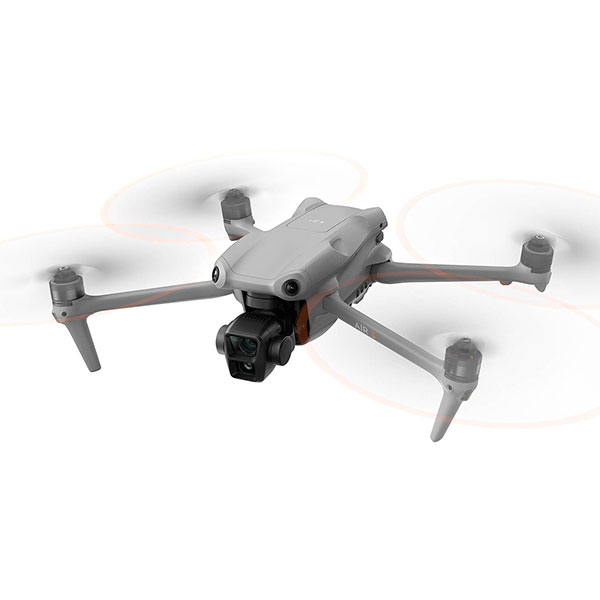 | DJI Air 3 Pros: 3x telephoto lens, 10-bit HDR and Log video formats, 4k at 100fps, drivability, unlimited battery, omnidirectional sensors and active track. Cons: Sensor less than 1", lack of 2.7k format in landscape. Opinion: I wanted to buy a C1 drone and I was undecided between this and the Mavic 3 Classic, in the end I chose the Air 3 because it is more compact and also equipped with a telephoto lens. The Air 3 mounts a sensor of less than 1" like the Mini 4 Pro: a new generation stacked sensor, obviously inferior to the 4/3 of the Mavic 3 Classic. When taking photos, you have to pay attention to the focus so as not to have any drop in sharpness. In addition to the Classic, however, it mounts the 3x camera: a fabulous 75mm equivalent that totally changes the way you frame with a drone! The flattening of the planes allows you to bring the mountains in the background closer together to create new perspectives. Compared to the Mavic 3 pro it is possible to keep the Log format even with the telephoto lens (as well as the c1 class) and this is in my opinion the strong point of the Air 3. In addition to the mini 4 pro, on the other hand, it boasts greater wind resistance, a flight height of up to 500m and a distance of 10km in ce and 20 in fcc. There are 3 choices of video format: color, 10-bit hdr, 10-bit log. In 4k, in addition to 30 and 60fps, we can even shoot at 100fps to get slowmotion without dropping in quality! What left me perplexed, however, was the choice to remove 2.7k from horizontal formats, which we now find only in vertical format for social media. I also did some night tests and I can say that we have finally arrived in the future thanks to the night mode. One of the most beautiful features in my opinion are the WayPoints that allow you to save a mission and repeat it over time, thanks to which I made videos with day/night transition. The drivability has improved quite a bit compared to previous models and the battery lasts over 40m (practically as long as an old battery combo). With the Ocus 4 you no longer feel the need to switch to fcc because it never loses the signal even in ce. In flight it is very fast and accurate. With the December 2023 update, the active omnidirectional track was introduced as on the mini 4 pro, as well as the new car mode that uses AI to follow us passing through obstacles and constantly changing shooting style. Other new features include the ability to look through the sensor chambers for greater safety when we want to deactivate them to pass through narrow obstacles or fly low to the ground. Finally, finally, it can be flown in fpv with the Googles 2 and you can do 360 with the telephoto lens to triple the final resolution of the panosphere. So even if the wide-angle camera of the Classic still appeals to me, I think I made the right choice to have the new functions but above all the telephoto camera! Ps: 10-bit 4k log files weigh a lot and you might end up changing pc like it happened to me. sent on October 25, 2023 |
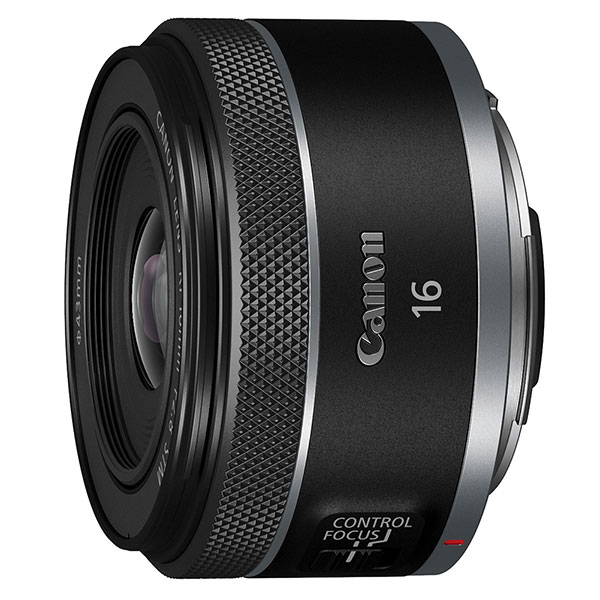 | Canon RF 16mm f/2.8 STM Pros: Very compact, f2.8, excellent flare resistance, economical. Cons: No IS, no zoom, drop in quality at the edges, vignetting, distortion. Opinion: To evaluate it I made a double comparison with the EF 16-35L f4 is on the R: first framing a building in front of mine, then medium / far MAF, then framing my kitchen, maf at short distances. From the comparisons made I found that: at f 2.8 it is quite sharp in the center and loses a lot at the edges, mostly for short distances; At F4 the 16ino in the center is sharp almost at zoom levels, but while at the edges the zoom remains perfect as in the center, the small fixed loses some quality in long-distance photos and loses a lot for short distances; At F11 both are very sharp in the center almost indistinctly, at the edges for long distances the fixed almost recovers the quality of the zoom, while for Maf at short distances it continues to have a drop at the edges. To sum up: compared to the EF 16-35L IS loses the stabilizer and the flexibility of the zoom but gains an aperture at f 2.8, even if at TA it remains little usable due to the drop in sharpness at the edges and the strong vignetting. For closed-aperture landscape photos I think the difference with the big zoom is minimal. and resists better to flare, for those of interior architecture instead you have to settle since for short distances the edges drop. Finally, checking a raw without lens profile you notice a wider-angle shot of a 16mm with a strong distortion at the edges (almost fisheye), activating the lens profile is stretched and cropped until it becomes a 16. In my opinion it could be this correction via software to ruin the yield at the edges .. the price to pay to have a pancake! sent on January 02, 2023 |
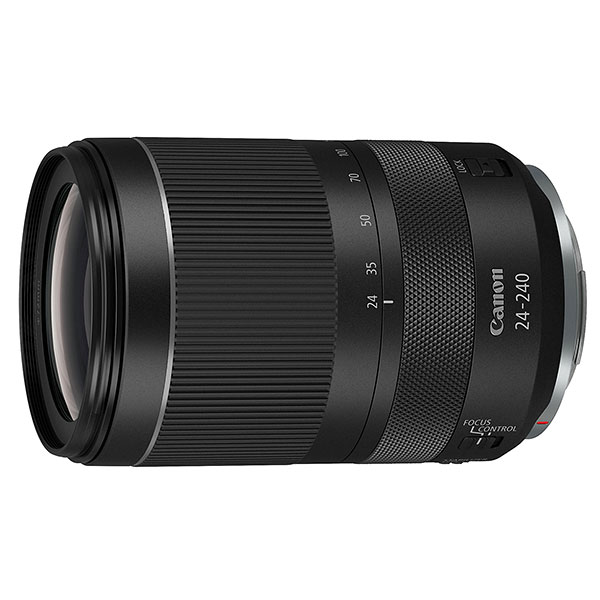 | Canon RF 24-240mm f/4-6.3 IS USM Pros: Focal range, dimensions/weight Cons: Yield at the edges, 24mm so-so, 240mm a little soft, not very bright and cost. Opinion: It is a fairly compact size lens for a 10x. The yield in the center is good, at 24 it loses a lot at the edges: deactivating the lens profile on camera raw you notice a lens wider than 24, a little fisheye, which is stretched and cropped by the software correction to obtain the final result that we are used to seeing. Between 50 and 100mm is pretty good; between 100 and 150mm gives its best, from here on it starts to drop until it becomes a little soft at 240mm. From my impressions in the wide focal lengths this super-zoom is poorer than the various 24-70/105 but at 70 and 105 beats them being halfway through its excursion. The convenience, however, is that compared to them the 24-240 reaches much further .. it's like having a normal zoom and a tele-zoom combined. I did some tests comparing with the 24-75 of the Panasonic lx100 (which I use on a trip) and beats it despite the greater focal range. Obviously it helps the FF sensor of the R against the 4/3 of the compact. Being a fairly dark zoom in the evening outings with the tip and shoot you go up a lot of ISO: I recommend for this to bring a tripod or flank a bright fixed. In my opinion it is the ideal optics for travel / trip because being able to shoot between 24 and 240 without changing lens is priceless! Being a handyman I also tried it in portrait and at the focal canvases manages to blur despite the dark diaphragm isolating the model. I am combining it with my set of fixed for travel use, reducing the use of the compact to the bare minimum, to take more advantage of the EOS R. sent on September 26, 2022 |
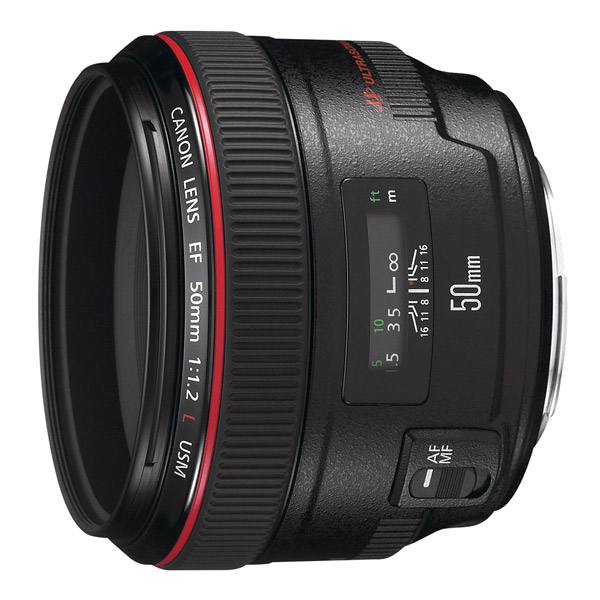 | Canon EF 50mm f/1.2 L USM Pros: F 1.2 super bright, compact and light, on the ML R has a great AF, wonderful blur, amazing bokeh, high sharpness from F 2.8 up. Cons: Chromatic aberration from F 1.2 to F 2, astigmatism to TA on nearby subjects. Opinion: An incredible lens that left me pleasantly amazed by the incredible difference in yield between my initial tests and field tests: from the tests in fact it would seem my worst L series, after using it intensely a week of vacation I can say instead on the contrary that it is my best goal! Let's start with pros: It has an incredible opening from F 1.2 but despite being a super bright it remains quite compact and light (as opposed to many new lenses that look like bricks); I was afraid to buy it in the days of the 6D but on my new R has a very good constant and precise AF (it did not miss even once the eye in eye-af with i-servo) ; the blurring is wonderful, if there are leaves in the background or grass at the bottom nearby becomes almost swirling; in the evening from the best of itself turning insignificant light points into an amazing bokeh! In TA portraits with a 3m subject the sharpness is already good, but it becomes very high from F 2.8 and up (especially for closer subjects). Let's analyze the CONTROS now: photographing in TA a subject very close to the minimum distance of MAF comes out a kind of halo/orton-effect due to a bit of astigmatism: it resolves by closing the diaphragm a little or away a hair; Photographing a subject in strong backlight easily comes out a bit of Chromatic Aberration for very open diaphragms between F 1.2 and F 2 if in the background there is sky (easily solved anyway in PP with a click). CONCLUSIONS: for portraits (set above all) after trying so many professional goals I can say that for my taste it is one of the most beautiful goals I have ever had for character and yield. Its most beautiful peculiarity for a portraitist is also a flaw: it continues to detach the subject from the background even closing the diaphragm. In addition to the portraitists I also recommend it to those who like to photograph in the city in the evening, thanks to its brightness allows shots in the dark with times beyond safety and only 500 iso! It's obviously not for those who need extended PDC or amazing edges. sent on September 27, 2020 |
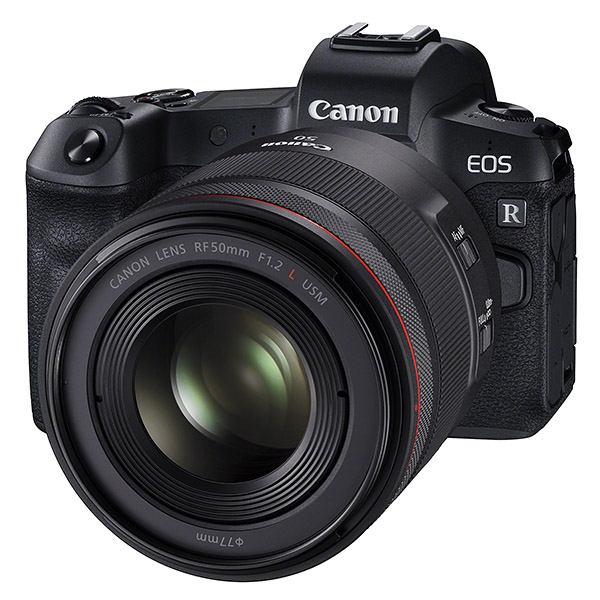 | Canon EOS R Pros: Great RAW file, ergonomics, size, customization, wind screen, beautiful touchscreen, C-Log, custom ribbon for AF, EF lens compatibility, multi exposures and HDR in the room. Cons: Lack of GPS, APP Canon, gust limited to 5, lack of joystick and wheel with arrows, limited video compartment, not suitable for sports with EF supertele. Opinion: After studying the manual thoroughly and testing it well I can say that I am very satisfied with the purchase made in relation to my use: portrait posed but also dynamic, landscape, architecture, indoor sports. PROS: I like the RAW file that I find very workable and detailed; ergonomics did not make me regret that of the Canon reflex; I find the size perfect (I don't like small ML); one of the nicest things is the total customization of the keys and menus, once done it seems sewn on (and for everything else the Canon menus are great); the screen is fully articulated; nice touchscreen looks like that of an iPhone; another marvel is C-Log of a very high quality; unlike many I love the ribbon but only since I customized it to choose the various types of AF (it is in fact easier to swipe forward or backward than to press a button many times or enter the menu); one of the most important pros is compatibility with EF lenses (I adapted all the old L-series reflex kit that seems resurrected and finally I took the 50L that I can use at 1.2 without microregulation with eye focus and great precision); another thing I liked is the ability to do multi RAW exposures of as many files as you want in as many modes, and also to merge HDR in the room with excellent results. Let's move on to CONTROS: The worst thing in my opinion is the lack of GPS, I always forget to connect it to the App Canon which is then slow when used as a remote control; If you need the burst know that it is limited to only 5fps per second; too bad for the lack of joystick (which is compensated by the excellent touch) and especially the wheel with arrows that are fixed; the video compartment is limited, to use it as you have to settle for the Full-HD at 60fps (enough for most use) lacks slow motion and especially croppa of 1.8x in 4k (unacceptable). If you love birdlife know that it is not suitable for sports with EF supertele, but it goes very well in indoor sport with my 200L II and the responsiveness of the AF adjusted for good. CONCLUSION: If you are a videographer or if you mainly play sports and birds, I recommend the new R6; For all other genres I recommend you save over 1000 euros because this R after the upgrade is a bomb and works much better than your old SLLR. sent on September 26, 2020 |
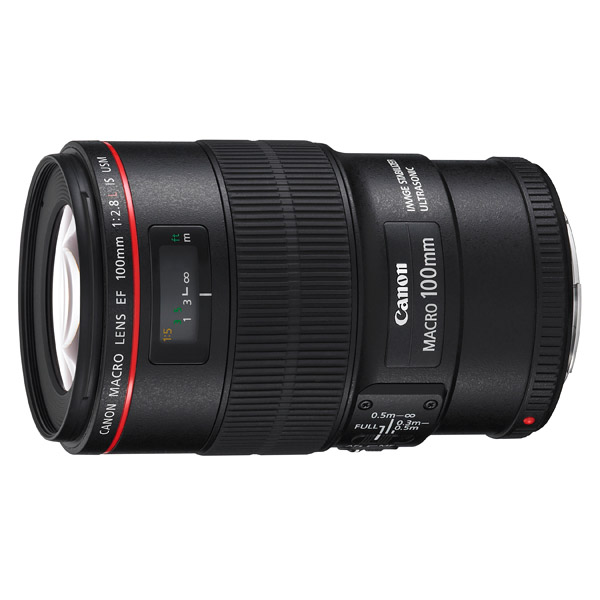 | Canon EF 100mm f/2.8 L Macro IS USM Pros: Very high build quality and optics, sharp already at TA, a blurry one typical of portrait lenses (unusual to be a Macro), beautiful bokeh, IS very effective. Cons: Shameful lack of tripod collar that given the absurd price force you to buy non-original. Skylight exaggeratedly long. Opinion: I write after more than a year of use. Before I owned the small and convenient 100/2, the comparison is embarrassing: even closing the small at 2.8 against the macro to TA the difference in sharpness is incredible in favor of the macro. The small one has a softer blurry but that of the macro does not mind at all, it is in fact very pictorial and beautiful unlike the 100 macro 2.8 not L which has a very hard one. Aesthetically it looks good, in the hand it is very solid and well done. The MAF ring in manual is very fluid and has 2 keys to toggle the IS, and choose the mode of AF: macro, landscape and all together. Switching to the specific AF based on use more than doubles the speed of AF. The stabilizer is amazing, it allows me photos on freehand FF with times of 1/10" .. while we know that safely without shooting at least 1/100". I also did freehand Macro tests by setting the AF for short distances, in I-Servo and with is active: the results were amazing, you can take a look in my galleries. With other macros tripod is an obligation. I also used it a lot to make portraits, one of the genres that I prefer: even here it did not disappoint me: certainly the sharpness is so much, in the raw room I have to set -15 of clarity, but the overall result I find it wonderful thanks to the progressive blurry. For me much better than other portrait lenses, because it is much more flexible: it allows you special cuts up close (such as photographing only the eyes, lips etc .. ). I'm just sorry about the shameful lack of a tripod collar that Canon tries to sell you at a robbery price, and also the slightly high cost but definitely right for the high quality. Recently I did it microregular in CS after a fall and it came back even sharper than before, I think it's one of the best goals I've ever had and I'll keep it even in the transition to the R system. sent on June 27, 2020 |
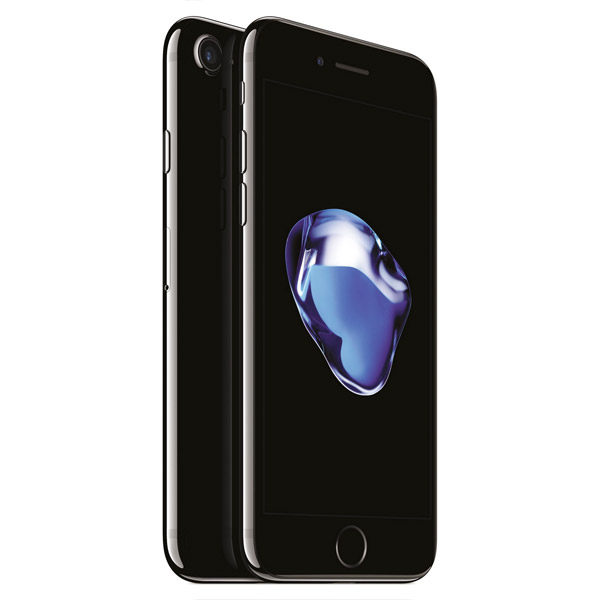 | Apple iPhone 7 Pros: Small size, weight, quality, ease of use, top camera of excellent quality. Cons: Battery life, front-facing camera. Opinion: I'm not one of those who often change smartphones to take every time the last release, in fact when I took this already existed the iPhone X. I came from Android but having an iPad I preferred to switch to the apple also for the phone so you can sync them and work on the same thing simultaneously (start an email on iPad and finish on iPhone, etc.) in addition to the convenience of finding yourself all the media stored equally on both devices. I chose the 7 for the quality/price but especially for the size: I do not know why the new models tend to be bigger and bigger (almost tablet format) in my opinion is more important the ergonomics of size, with this arrival with the thumb everywhere, perfect stocking in hand and is also very light. I also like the design, beautiful the polished edges, I chose the matte black, a matte black so beautiful I had never seen it. Initially compared to Android I had to get used to many things, it is a more closed system and does not allow you to do some things that instead Android leaves open, but also for this reason is a system much safer, faster and easier to use. I almost never use my phone to take photos, in fact beyond the reflex I took a compact pro for light outputs. For this reason, at the time of purchase I did not focus so much on the goodness of the camera; but then using it sometimes while I run (having nothing else with me) I was pleasantly impressed by the quality: sharpness to sell, very detailed landscapes and almost never kneaded, a function to make gif photos in very nice motion thanks to which you can get even long freehand exposures that to get them in reflex you have to bring tripod and filter ND more various calculations. Nice photo editor too, but if you're not enough, you can install Photoshop. But I'm even happier with the video quality and especially iMovie' that allows you to edit videos almost in a professional way. I'm a little less satisfied instead of the front-facing camera. I understand that it is used right for video calls but if you want to take a selfie with your girlfriend is quite kneaded. To this day I would buy it back, I took it at a good time two years ago again at 600 degrees and I think it is a faithful companion in everyday life. The only thing I would change is the battery, too small for all the features it has. sent on May 29, 2020 |
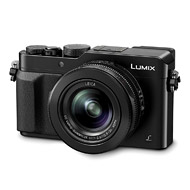 | Panasonic Lumix LX100 Pros: Bright Lens, Zoom, 4/3 sensor, Cheap Cost. Cons: It doesn't fit in your pocket like other compacts, but it's quite compact compared to reflex and ML. It doesn't have built-in geolocation. Opinion: I took this camera at just 450 euros new with 4 years of Warranty, an unbeatable quality/price. I was looking for a more compact and light alternative than the Reflex: it's not exactly pocket-sized (in jeans it doesn't fit) but it's perfect to always carry with you. I chose it because it has a 4/3 sensor and a Leica 24-70 eq lens. very bright f/ 1.7 - 2.5 thanks to which you can also make portraits with blurred background as well as beautiful landscapes and macros not too pushed. I discarded all compacts with 1" sensor because they do not give the same quality and do not blur. The alternative with similar quality were the ML, but in no system i found a Target 24-70 eq. bright and compact like this Leica. Another alternative was a compact Fuji but unfortunately I did not like the fixed focus lens. So strange but true: it is one of a kind. Now that the mrk II version (which updates a few things) is even more worthit, because it has fallen in price. The only real flaw in my opinion is the lack of GPS, the photos so they are not geolocated. The only way to fix it is to connect it while using your smartphone and use your gps via the app, or tag photos from pc once you get home. For the rest I highly recommend it. in good light conditions makes you forget you don't have a reflex. sent on October 23, 2019 |
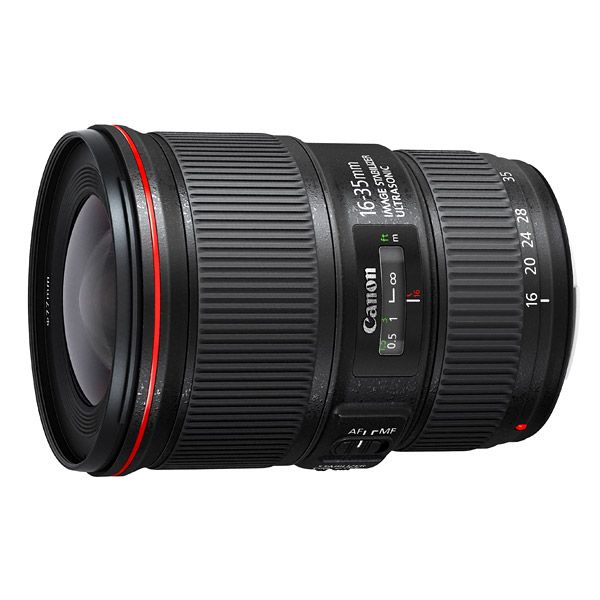 | Canon EF 16-35mm f/4L IS USM Pros: IS, Focal, sharpness Cons: Size? Opinion: An amazing goal. Unlike the old 16-35l I and II is a huge step forward, unparalleled as surrender. Super Sharp, looks like a macro. Beautiful star of Light. @ 24 The maximum yield and the least distortion (almost absent). It seems to be optimized for open aperture.. Maybe 5.6 is the best. The stabilizer works great, it really recovers 4 stops! If you don't need 2.8 then this lens is for you! In the architecture photos inside the dark churches (where often do not allow you to use tripod) is a godsend! You can shoot at embarrassing times freehand without raising too much ISO! I highly recommend it. sent on October 31, 2018 |
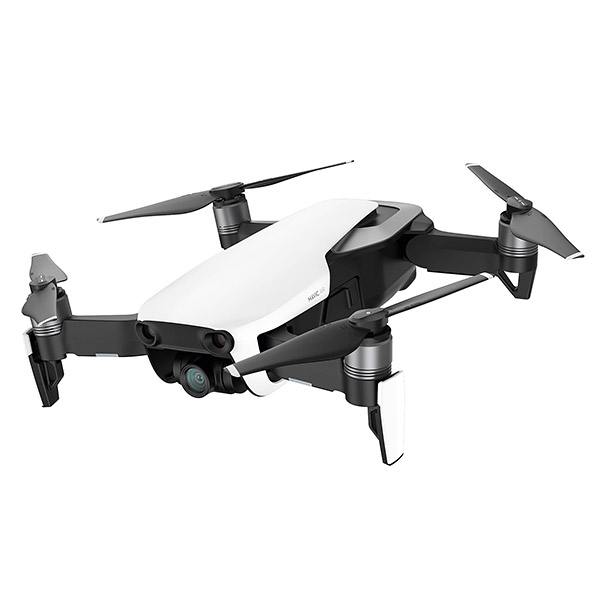 | DJI Mavic Air Pros: DNG Photos, Compact, Super stable videos with the Gimbal 3 axes, Design, Materials, Bag version "COMBO". Cons: Battery Life, Flare and Counter-Light, Fixed Diaphragm. Opinion: A real gem. I wanted to buy the Pro 1 but then seeing it live I could not resist, because the camera is identical but savings in size; The Combo in a small bag contains: Drone, 4 batteries (but provides 3), remote control, and spare accessories. In flight it is super stable and so are the shooting thanks to the efficient gimbal. It suffers a little backlit but it is normal being a compact. The wifi is not at all scarce, its band is reduced because of EC regulations (an old legislation existing by before drones in my opinion to be updated) but if you use it in the FCC it has nothing to envy to the older brothers. Battery life is poor, it lasts about 18' (not 21 as stated) but with the 3 batteries of the combo version flying almost an hour, I have 4 for travel. There are several flight modes and they are all great: to start I recommend the "Quick Shot" with the functions already set of shooting; but it takes little to learn how to use manual controls both in the "sport" version (thanks to which it becomes a rocket) and in "Cinematic" that softens the movements for videos even more stabilized; you can use the "Point of Interest" to rotate around an element with the radius and speed you prefer; "Traking" to follow people or vehicles on the move; "Tap Flay" thanks to which you can set a flight path and command only the gimbal for filming... and so much stuff that allows you to make professional videos in 4K with ease even to a beginner. I use the 2.7K (size that I find perfect because the Full HD is small and the 4K large, they should also insert it into the cameras) in "flat" (a great file for those who love to post produce) and then I apply the picture styles in Adobe Premiere CC. I highly recommend it! Changing the PDR will change the way you understand photography and make you passionate about videos too! Quality/price I recommend it: it is true that for less you could take the Mavic Mini but the safety is completely different: this in the FCC flies up to 4k away even in the sea or in the mountains and in total safety, the Mini can fly maximum to half a km and having less powerful engines with a burst you risk losing it with ease (without considering that with Mini you could not even take pictures in Raw). The Pro 1 I consider nowadays a useless upgrade, you would improve only a little more in signal strength and battery life but already what the Air does is beyond what is allowed by law and you will not be able to take full advantage of it. So to get up in quality you should aim for the Pro 2 but at a different price! sent on September 18, 2018 |
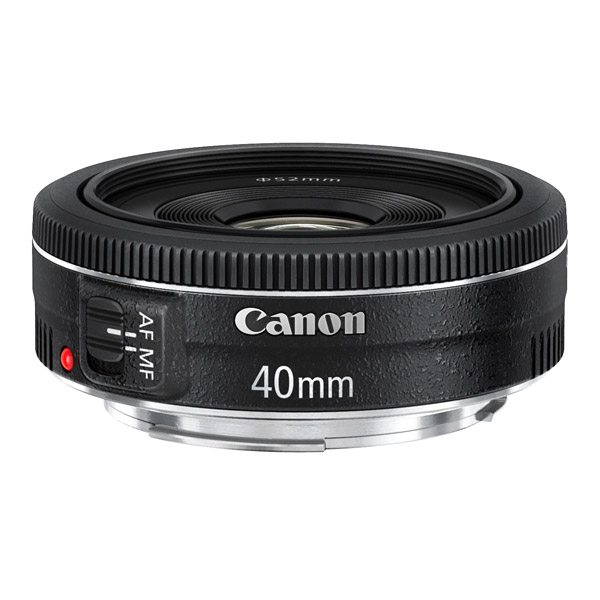 | Canon EF 40mm f/2.8 STM Pros: Light, small, cheap. Cons: Very, very sharp to TA, very slow AF compared to a USM. Opinion: MAF Slow but Precisissima. .. In the portraits set I see it well at f/3.2, there is enough sharpness while keeping a little blurry on FF.. Super good at 5.6, I think it's his best diaphragm. However, I have not found diffraction problems as some say already suffers from F/11: I pulled it at F/14 with acceptable results. The vignetting seemed a little too pronounced.. It was to be expected from a pancake. By pulling the sums, for the price I think it was worth taking it. It is small and comfortable although with the 6d you can not reach the size of a compact as dreamed, because of the body though. I recommend it for quality price. sent on September 10, 2017 |
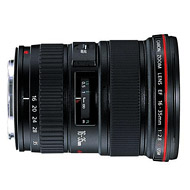 | Canon EF 16-35mm f/2.8 L USM Pros: Zoom, f / 2.8, size and weight, AF. Cons: Good only at the center, distortion at the edges. Opinion: Maybe I expected too much being an L series, but do not give him a pass on FF not very convincing. too inconsistent made to the various focal and very poor most of all the edges where you have a decline of sharpness, vignetting, and above all a difficult strain to be placed in PP. APSC instead of made it a little better, as the crop factor was cutting off the poorer parts of the lens. Definitely in his favor is necessary to recognize that in 2001 it was not easy to achieve one f / 2.8 zoom lens with AF and tropicizzato; although today thankfully the technology has moved on (and version III of this now seems a precursor of another planet). At the time I replaced with two fixed 14 and 28is samy and I must admit that I've found it better even with Samyang over version 1. Now I have sold well both fixed to switch to another Canon 16-35L, the f / 4 is .. That's a whole other story! But first there was unfortunately otherwise I saved up all these buy and sell :) sent on October 25, 2016 |
 | Leica Summicron-R 50mm f/2 Pros: Colors, materials, size, weight, quality. Cons: Nobody. Opinion: I have a German model in very good condition I use on Canon EOS 6D. I must say that the first thing that struck me is the care of the packaging and the materials and the precision with which it was built. At first use I found it hard to be a completely manual view. The meter does not work so it does not tell me if the photo is dark or clear, but I'm used to it now. We work on TV (Canon times) so we have a masked M function since the lens can change the aperture of the diaphragm from the ring. Looking at the PC for the first time, the photos were surprised by the COLORS: incredibly realistic, dominant, which I was used to to see, and above all blue to leave without words. Very nice also blur it, does not detach the focus and dissolves the background, this has a progressive blur that tells the depth of field and a nice 3D effect. At f / 2 it is very sharp already, but it still improves af / 2.8. While still af / 2 the portraits are special%2C seems to be a kind of Orton effect that makes the faces already clean and polished, I've never seen such a thing, really beautiful. HISTORICAL BACKGROUND = Two options were made for this purpose: German the first, Canada the second. The German model is more expensive construction, with all the glasses of the double gauss curved; On the contrary, in the Canadian model, some of these have become straightforward to make Opti's production cheaper during the crisis. It seems that the difference between the two (according to Cavina: http://www.marcocavina.com/articoli_fotografici/Leitz_Summicron-R_50mm/00_pag.htm) is that the German model is optimized for short and long distances and less to medium, on the contrary Of the Canadian that is better at distances than average Mafs. I can confirm what Cavina said for the German model, shooting at short distances has an incredible contrast to the media. sent on March 28, 2016 |
 | Zenit Helios 44-2 58mm f/2.0 Pros: Blurry magical Swirly, price, weight and reduced size. Cons: Flare and little sharpness at full aperture. Opinion: Version 2 Helios has a diaphragm 8 blade (unlike the newer versions that have 6), and a preset aperture ring that lets you choose from such as diaphragms work. My original f / 2 is soft and at the same time affected much of flare, stopped down to f / 2.8 improves already very increasing sharpness and contrast and resistance against the light. The best of it by f / 4. If put in the right conditions brings out his character: I speak of the famous focus Swirly, a very special kind of whirling blur. The best way to be able to get it is to choose a background full of light sources (such as the leaves of a tree illuminated by the sun, or a flowery sunny field, etc.). Not being a monster in sharpness and being a vintage manual is certainly not the aim of every day, but in those circumstances in which you can pull out its certain character gives different photos from the other. sent on March 24, 2016 |
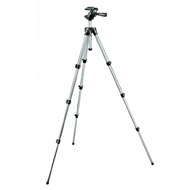 | Manfrotto MK 394-H Pros: Closed compact, durable, design, materials, solid, stable. Cons: Heavy to carry around: 1.67 kg, but since aluminum is normal. Fixed head. Opinion: I took this tripod by amateur and semi-pro. I am happy with the quality / price. The reflex is safe, up to 3.5 kg you can rest easy. It has a nice series bag to carry it to bring it to the shoulder around. The 4 sections make adjustments comfortable. The inclinations of the legs are easy to adjust, but at the same time firm and solid. The head sadly is fixed, if you want to buy another medium (tripod, monopod, tripod) can not reuse it. Nevertheless, it is well done, excellent materials and precise and fluid movements. The collars to lock the movements are very precise: From throttle down you adjust the horizontal movement; the handle is adjusted by rotating the vertical tilt; Butterfly from the side you can adjust the horizon line up to go from horizontal to vertical photo mode. Not included is a sin level (although I do not need already having it the SLR). Under the feet are provided non-slip rubber. The plate is very solid, coated with a gomminto avoid scratching the reflex during fixing. In general I have to say that is a great tripod that gives satisfaction, every detail seems nice and thought. Obviously, there are other alternatives but in this price range I recommend it. sent on February 12, 2016 |
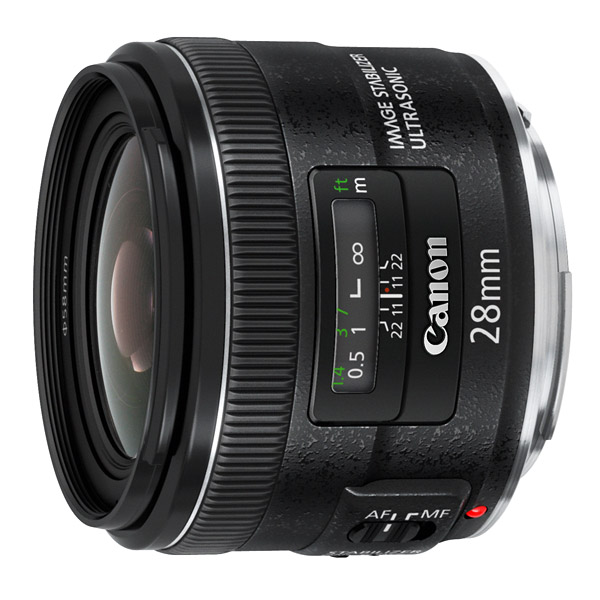 | Canon EF 28mm f/2.8 IS USM Pros: Small, light, beautiful, strong, beautiful bokeh, crisp, it is. Cons: Price altino, no hood, vignetting, slight distortion. Opinion: I bought this 28 per landscape and architecture of FF; 28mm (and not 24) to be able to also use for some environmental portrait and street (to the perspective distortions) limit. solid construction and beautiful to the touch as well as aesthetically. clear glass to the edges. Distortions almost absent but present, a bit of vignetting (correctable things with a click in digital, even if used in analogue will give a vintage feel). rnHo also ran tests of bokeh and aperture 7-blade amazed me: creamy and also closing round. The stabilizer 4 stops doing his job: I took the evening to freehand dark at 1/8 "ISO 400 with f / 2.8. Being compact mounts of small filters 58mm, same diameter as the 100 f / 2 I own also ; I then bought some filters that use both when I landscape. Perhaps the only flaw is the price for us Italians (because in other countries costs 100 € less, in fact I got from Germany), and especially the lack of lens hood : a € 55 theft plus (recommend you buy the compatible from amazon, which is identical and well done). rnrnDaniele sent on October 08, 2015 |
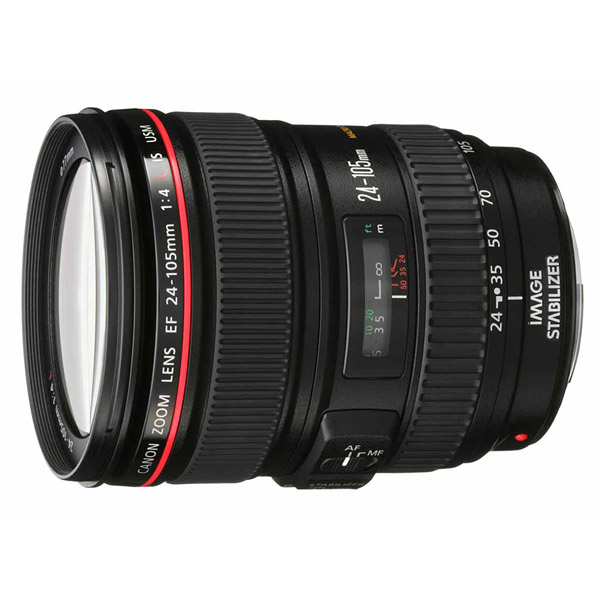 | Canon EF 24-105mm f/4 L IS USM Pros: Handyman, IS, AF, comfortable rings, 8 rounded diaphragm blades, dividend plans, lens hood, tropicalization. Cons: Gravity zoom, color aberration, distortion and flare to 24, f / 4 sharpness. Opinion: I find it a great all-rounder. I state that I love the stationary but there are cases where you can not do without a zoom: trips, sea, sand etc. . (Where change continuously target becomes dangerous as well as inconvenient). rnL'ho purchased in a kit with the 6D about a year ago, I was initially worried del'f / 4 coming from a 17-50 f / 2.8 but was pleasantly surprised by the detachment of the plans and the blurred despite the iris dimmer. rnScomodo the problem of gravitate zoom, holding the reflex shoulder as I walk always comes out zooming. rnNon feel that same sharpness of fixed which are used to shoot at f / 4, but the AF is accurate and can be improved by closing already at f / 5, distortion and vignetting go away with a click. Instead flare remains with backlit subjects but personally I like the effect if well managed. The lens hood is well-made, petal, smooth internally. A goal which I highly recommend to FF .. Where f / 4 is enough compensating with ISO because the detachment of the plans and blursIt is still to be reached. 24-105L as a handyman whole life .. If I can not use a fixed rather have more mm .. sent on July 29, 2015 |
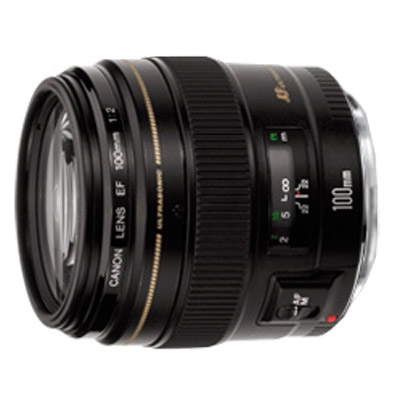 | Canon EF 100mm f/2.0 USM Pros: Sharpness, Unfocused, Bokeh, dimensions, weight, quality / price ratio, materials, af lightning. Cons: Hood, do not consider the lack of a counter is because it is written in the characteristics of the lens and if you choose you know. Opinion: I consider in quality / price ratio the best canon lens for portrait (thanks to its focus gentle, nice and soft) and also excellent for indoor sports (thanks to its lightning-fast and accurate AF system and high brightness). Compared to similar 85 mm does not suffer from the problem of chromatic aberrations and has a focal length in my opinion perfect on FF. We defended well against the noble 135L as more than a sharpness very nearly identical can boast price, dimensions and weights halved! Furthermore, according to the rule of the doubling of focal length (useful to choose a set of fixed) the triplet: 50, 100 and 200 mm proves very balanced! A difference of 85 and 135 coupled that do not follow any rules. Even the construction of the objective seems impeccable: at first glance I noticed the strength of materials and a body from L series masked. The only cons that I could find is the lens hood: this model is not equipped with the usual screw thread, but one with two side hooks, that for my personal taste I find most scoso; I find it ridiculous that then sell it separately. However the use turns out to be as' less effective. Among the advantages of this goal: an incredible bokeh effect, wide open I did portraits where the lights of the city in the background were designed in soft dots of light very large. His other qualities the great detachment plans also diaphragms less open: this feature allows you to get pictures with the subject in focus and the background blurred and creamy, almost dissolved. In conclusion, I can only advise that goal: I do not think that in fact spend twice for the 135L will return a double quality to your photos. To be honest I do not think that the 135 can be considered even slightly higher than this, but I see them identical. Giustificherei the choice 135 only in the case where those 35mm in special cases will change their lives but not for the quality! Regards, Daniel. sent on December 18, 2014 |
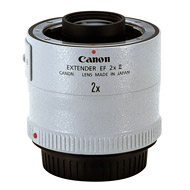 | Canon EF 2.0x II Pros: Price from used, yield, Construction, Tropicalised. Cons: No one Opinion: I was undecided whether to take an extender or a compatible Canon to multiply my 200L ii and get a 400 f / 5.6. From the reviews read about the loss of quality that can occur by multiplying x2 a lens I had thought to buy as cheap as possible and use the 200 multiplied rarely if necessary. But instead I got this canon of second generation and against all odds I fell in love: the loss of sharpness is negligible from smooth, the autofocus locks is also a beauty birds volo.rnOra do not know if that good quality I get to be attributed to this extender, the 6D or 200L .. But I think it's a mix of 3, which gives excellent results. sent on November 03, 2014 |
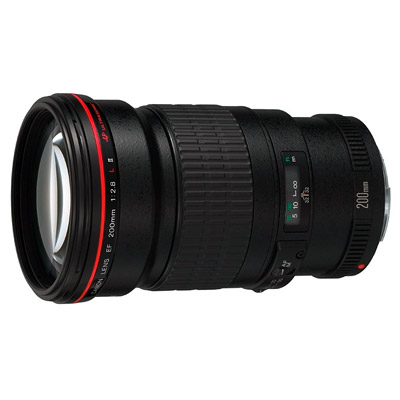 | Canon EF 200mm f/2.8 L II USM Pros: Optical Quality, fast AF, f / 2.8, light weight, dimensions, construction, can be multiplied, pleasant blur thanks to 8-blade circular diaphragm, quality / price unbeatable, is not black and stands out too much. Cons: I find no flaws. The lack of IS is not, but it is among the specifications (if you choose it you know). Even the lack of versatility is not, because those who need it do not buy a disk. Opinion: I wanted a tele portrait lens, which if necessary could be multiplied to give me mm and the few times I had bisogno.rnMi I was initially informed about the white zoom canon, but I was in difficulty in the selection: each had a few against me that made him discard . The 70-200 f2 / 8 L weighed too much and it was huge, although I liked the quality molto.rnLe versions of f / 4, although this time on weights and dimensions were good, were not suited to portraits for the little aperture. I also evaluated the 70-300 mm for more if necessary, but an even more f chiusa.rnrnPoi the stroke of genius, I realized that I would have used 99% to 200mm (already having an ef 100 f / 2 ) so I am informed on fixed and I discovered this wonder: the canon ef 200 f / 2.8 L ii.rnrnQualità unsurpassed optics, a cream out of focus and especially f / 2.8 with weights and a compact device. They seemed to have joined the quality of the harrier to the weight of bianchino, too good to be true! RNA that point I said, such a view will cost ifnz'altro a bang, perhaps more than the harrier! But I was wrong !! rnSono able to catch him again, with 2 years warranty ita + 2 more at the cs Milan (for a tot of 4 years) only 650 € including shipping !!!! rnrnInoltre with the money saved I took a bell'extender canon x2 to get a fabulous 400 f / 5,6 if necessary! rnAltro that 70-300 L :) ... and tell you that I have done so many tests and multiplied the AF is still responding to my grande.rnOra is new with date code 2014 .. I do not know if the newer ones have improved the ' use with extender, I can safely say that is a splinter and not to the merits of the 6d, because I have not encountered any problems even doing tests on the old 1000d.rnrnSe like me looking for a perspective light, small, black (which does not result in too 'eye), with f / 2.8, multipliable, great quality and an affordable price do not worry you do not ask the impossible! Exists and is called "canon ef 200 f / 2.8 L ii." rnL'avessi only discovered before :) sent on October 19, 2014 |
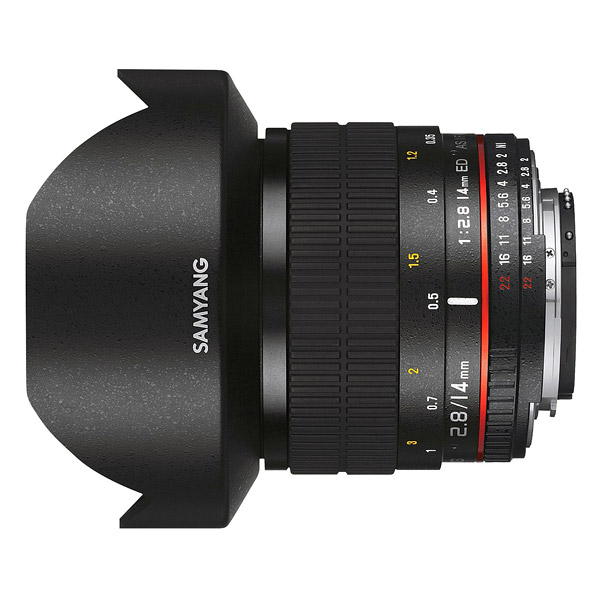 | Samyang 14mm f/2.8 IF ED UMC Aspherical Pros: Sharpness up to the edge, unbeatable quality / price, color, f / 2.8, hyperfocal, dial the correct distances in the 2014 version with a red line. Cons: All serviceable: maf manual (just look at the screen working in LV, zommare object, focus, recompose the picture and shoot), distortion whisker or gull wing (if film shots do not recommend this objective for architectural photos, but if you're into digital with one click in pP is rectified). Opinion: I was very happy !! rnrnSe you care about these things: rnlavorare in iperfocale, distortion, MF, incorrect scale distances ... rnpuoi feel comfortable !! rnrn- Distortion: If you work in film do not recommend it, but for digital there is a good review of Perbo (a user here on Juza) that even allows files to be put on photoshop camera raw for lens correction. Done and it works !! rnrnwww.perbo.it/reviews/Samyang14UMC.html rnrnPoi to be honest I come from a 16-35 f / 2.8 L and distortion found it much worse than before! rnPerchè while here with the profile of camera raw slow the recovery well, you apart from the problem of non-straight lines was what the edges everything portrayed became huge (and raddrizzandola mica snelliva) also the quality at the edges fell a lot but now not. RNE we are comparing a lens from 1500 against a € 300 € !! rnMe are sold and with the money saved I took Sammy 14mm, 100 f / 2 and shoulder strap for SLR Fless .. I still advance money from the sale, and I'll buy when it comes out evenfisheye Samyang for FF .. rnrn- MF: worries you because it manual? I'm used to the first shot! also being a 14 mm is not so hard to focus: I tried to close the aperture a bit and move the focus to infinity and almost everything was on fire! rnPoi there are so many apps that explain how to set the hyperfocal if you need ... rne if you seek a precise focus (eg f / 2.8 on a subject and blur the rest) just snap looking in the SLR screen in LV .. zoommi a bit and focus :) rnrn- ring erroneous distances: only in older versions. If the new purchases, the one with the red line has the ring of proper distances. If you want to buy used no problem the same: there are deu tutorial to also correct the old modello.rnrnQualità / unbeatable price ... The sharpness it can paragonar to 14 canon .. But the price !!! Ehehhe .. rnrnSaluti Daniele sent on September 24, 2014 |
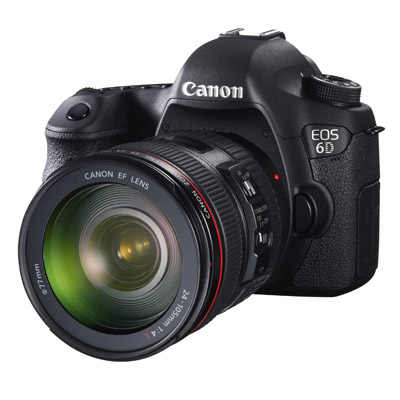 | Canon 6D Pros: FF "most economic", lightweight, super-equipped (wifi-GPS), excellent yield high ISO, the central point of focus sensitive. Cons: Do not seem to find. Opinion: His files are of the highest quality. With 5m of PP you can get great results from its RAW. rnSe want an SLR FF "accessible", with weights and overall dimensions are looking for a 6D. rnMi like the ability to customize many features in the menu and in the mode dial exposure: for example, I've customized the C1 works for portrait with 100 f / 2 and the C / 2 to use when 200L; in these functions you can choose the time of security, among which values ??of ISO must choose the camera, and even the aperture preferred. RNLA thing that surprised me the most is how well the iso holds even at very high values! Automatically can rise to ISO 25000 but I have to say that doing the tests I decided to lock it to 12000 ... limit within which I think the pictures can be recovered in PP to perfection without losing detail. Up to 6400 ISO instead of no use to eliminate the noise in PP because there is. Useful adjustment of whites in the manuale.rnBellissima whatity of the video! Did not buy it for that, but once you get a chance you use .. My advice is to focus on the subject in the photo mode, then go in and record video (for static subjects). If the subject is moving and changes the fire touches the MF (still quite intuitive after a little 'practice. Maybe better than many video AF which then lose the subject) .rnC'è who strives to find as against the materials but it is known that defects belonged only to the first models. In fact those 2013 onwards no one has complained several necklines of grommets or other defects. My after a year is still BRAND NEW. rnSecondo me save € 1,000 rather than choosing 6D 5DIII agree if: you do not need 1/8000 "(the 6D stops 1/4000") and if you do not need a body carrammato for use in places "difficult" (deserts , swamps, rain, etc ..). rnIo 1000 € I have invested in the kit lenses ... sent on June 27, 2014 |
 | Canon EOS 50E / Elan II Pros: Eye Control (focus in the eye!), Ergonomics, materials, recognition of the film, wrapping and automatic loading rollers, the quality of images. Cons: None Opinion: I was lucky enough to be able to buy new inventory as inventory (now no longer possible since discontinued). RNLA find a fantastic reflex, is famous for eye control: focus on the eye. It is really simple, just calibrate it with his own eye, and before shooting just look at one of the points of focus Directory to put the machine in automatic focus on that punto.rnMi really like the ergonomics, very comfortable and not too heavy in hand, and is made of quality materials. A part of exposed metal and coated with a color nero.rnLa quality of the images I find amazing! RnSolitamente use a 6D (a Canon full frame SLR also very nice), but the 50th and always carry with this snap the 2 / 3 Pictures of the service. The yield of the film is very charming, and although the 6D is capable of churning out terrific file I find that this is impareggiabile.rnrnOvvio counter could be that the film has a cost .. but our obbi / work when it has never beenEconomic :) sent on June 23, 2014 |
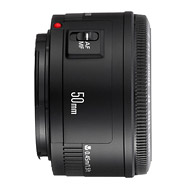 | Canon EF 50mm f/1.8 II Pros: Quality / Price incredible! (Maybe there were others), lightness, f / 1.8, bokeh, sharpness super f / 3 and up .. Cons: Materials, nut MF, AF slow. Opinion: I received this in gift from my girlfriend years ago (when I still had my first SLR, the 1000D). It was my first drive, a very welcome gift, through which I discovered targets bright. The specimen had received AF defective, the next day I went with my girlfriend to the store and they replaced me with another (I still) perfect! rnSento many complain of AF inaccurate. I can say that my AF has a slow (but I do not give anything because I use it for sport but for portraits), that the mode MF is uncomfortable (but who uses it in MF?), But absolutely can not be said that mistakes AF! rnMi really like the kind of focus that has hard and nervous, you can achieve great effects, especially on FF .. Where the lens is reborn than before on APSC. Stopping down a little you can get bokeh effects pentagonal (thanks to the diaphragm blades to 5), while opening it for portraits you get amazing results. If you need a lens super crisp stopping down to f / 3 up becomes a blade. rnih conclusionquality / price I think is even cheaper by 50 f / 1.4, as this it is around € 100 and € 300 on the other. To me what f / 1.4 does not return a quality 3 times higher to justify the price increase. sent on May 21, 2014 |
 | Canon A-1 Pros: It's a reflex Mechanics (with commands controlled by rings), very rugged, charming, built with metallic and non-plasticky. Cons: Heavy, un-ergonomic (though it's nice just to his own style) Opinion: I bought it second-hand after having a canon eos 1000d digital for a while '. RnMi seemed at once fantastic, I managed to get a good roll from the first, do not miss a beat, and the quality of the images seemed even higher than those of the 1000d improved to pc.rnDispone modes av, tv and M of moderne.rnPeccato that after some use it is locked. The problem with these cameras is that if you do not get ruined for years and there are no more spare parts even to the canon service, where I sent it because I wanted molto.rn sent on May 21, 2014 |
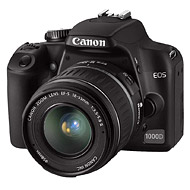 | Canon 1000D Pros: Economical, lightweight, has useful functions for learning how to use an SLR: Manual, Shutter priority, Aperture priority. Cons: Obviously you can not take too much for this price but it has many shortcomings: low iso 1600 and even exploited well, there is often noise in the picture, system focus disappointing, except when used with a fixed point. It does not have video mode. Low quality materials. Missing the top screen. Opinion: I consider it a great machine to learn, at least for me it is stata.rnDa the ability to use the camera in the upper mode of the sisters, from pre-programmed scenes to those manuals (AV, TV, M). RnGrazie these you can learn all more photographic techniques: rnCon TV set can slow shutter speeds to blur creative techniques (panning, hazy skies or water movement, etc.) rnCon av ... we can learn to use the brightness of a lens opening up to the maximum aperture for portraits, or closing it to take pictures of paesaggio.rnIn M manual can do everything ... rnrnOvviamente limits at some point will be felt, and luckily! It means that the basic things you have learned and now is the time to move on to the next level to continue in this wonderful passion which is to be fotografia.rnrnSpero state of aiutornUn salutornrnDaniele Ruggeri sent on May 19, 2014 |
 JuzaPhoto contains affiliate links from Amazon and Ebay and JuzaPhoto earn a commission in case of purchase through affiliate links.
JuzaPhoto contains affiliate links from Amazon and Ebay and JuzaPhoto earn a commission in case of purchase through affiliate links.May Beauty Be Everywhere Around Me